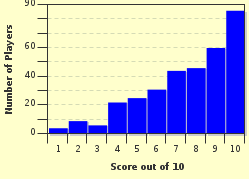Quiz Answer Key and Fun Facts
1. Unbeknownst to you, a family member buys you a box of sports cards. You read in an online article that this particular box would contain two autographed cards, and you are excited. At least that's what you heard about the hobby version. You anticipate the same thing for all versions of the box, but you find nothing. Because of this difference, you were most likely given what type of box?
2. On impulse, you buy yourself a pack of hockey cards. You open up the pack and find an autographed card of Wayne Gretzky. You do not know the value so you ask your friend to come over. He checks the card and tells you that it is an SP and that it has a very-high BV. Confused, you ask what that means. What does SP and BV mean?
3. Inspired by a friend's comments on a recent card product, you buy a box of baseball cards. Before you open the box, you read on the side of it that it is guaranteed to contain one game-used card. What exactly does that mean?
4. You have heard the name Upper Deck and you assumed that Upper Deck was the only card company that ever existed. Walking through your local hobby shop, you notice a box of cards made by a now defunct company. Thinking back on it you don't remember the name, but you remember that it was named after an ocean. Which company's box did you buy?
5. Your spouse buys you a pack of Basketball cards and you magically find a Michael Jordan rookie card. Your trusty sports card enthusiast friend comes over and tells you to put that card in a toploader. What is a toploader?
6. You go to your local auction house and you somehow manage to pick up a raw version of a Babe Ruth rookie card for only one dollar! You immediately make the decision to get it graded. You send the card off to Beckett Grading Services, and then realize you do not quite understand what grading is. What is the purpose of card-grading?
7. Your friend goes over to your house with a very long box of 2008-09 O Pee Chee hockey cards. You ask what the box is for and why it is so large. He tells you it contains the O-Pee Chee master set for the year. What is a master set?
8. Just like with cars, houses, and clothing, there are cheap and there are very expensive packs of cards.
9. You are surfing the internet looking for cards of Dan Marino when you come across a "white-whale". What exactly does the term mean when it applies to sports cards?
10. The sale and distribution of sports themed cards began in the 1940s to boost combat troop morale.
Source: Author
Bruce007
This quiz was reviewed by FunTrivia editor
gtho4 before going online.
Any errors found in FunTrivia content are routinely corrected through our feedback system.

